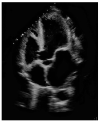Does Oxygen Content Play a Role in Spontaneous Closure of Perimembranous Ventricular Septal Defects?
- PMID: 34682146
- PMCID: PMC8534918
- DOI: 10.3390/children8100881
Does Oxygen Content Play a Role in Spontaneous Closure of Perimembranous Ventricular Septal Defects?
Abstract
(1) Background: the impact of a series of laboratory parameters (haemoglobin, haematocrit, foetal haemoglobin, peripheral oxygen saturation, iron, transferrin, ferritin, and albumin) on perimembranous ventricular septal defects spontaneous healing was tested. (2) Methods: one hundred and seven patients were enrolled in the study (57% males; mean age 2.1 ± 0.4 years) and were subsequently subdivided into two groups: self-healing (n = 36) and in need of intervention (n = 71). Self-healing subjects were defined on the basis of an absence of residual shunts at colorDoppler across the previous defect. (3) Results: no statistically significant differences were reported in the size of perimembranous ventricular septal defects between the two groups (p = ns). Conversely, prevalence of anaemia was significantly higher in those requiring intervention than in the self-healing group (p < 0.03), while haemoglobin, iron, ferritin, and albumin levels were lower (p < 0.001, p < 0.05, p < 0.02, p < 0.007, respectively). In multivariable linear regression analysis, only haemoglobin and albumin were found to be associated with spontaneous closure (p < 0.005 and p < 0.02, respectively). In multiple logistic regression analysis, haemoglobin independently increased the probability of self-healing of perimembranous ventricular septal defects (p = 0.03). All patients needing an interventional closure of perimembranous ventricular septal defects presented with haemoglobin <12.7 g/dL. (4) Conclusion: the self-resolution of perimembranous ventricular septal defects seems to rely on numerous factors, including oxygen content, which is likely to promote cell proliferation as well as tissue regeneration. Haemoglobin blood concentration seems to influence the natural history of perimembranous ventricular septal defects and improvement of anaemia by supplementation of iron intake might represent a simple and reliable method to promote self-healing.
Keywords: anaemia; congenital heart disease; haemoglobin; iron; ventricular septal defect.
Conflict of interest statement
The authors declare no conflict of interest.
Figures
References
-
- Dakkak W., Oliver T.I. StatPearls Internet. Treasure Island (FL) StatPearls Publishing; Treasure Island, FL, USA: 2021. Ventricular Septal Defect. 8 June 2021. - PubMed
LinkOut - more resources
Full Text Sources
Miscellaneous



